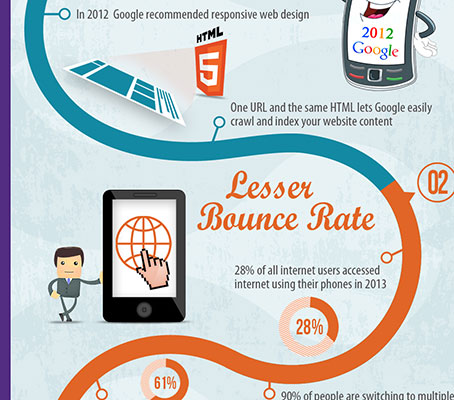Get Ready To Journey Via Time And Find How Websites Have Become Extra Sophisticated, User-Friendly, And Visually Magnificent
Get Ready To Journey Via Time And Find How Websites Have Become Extra Sophisticated, User-Friendly, And Visually Magnificent
Blog Article
Authored By-Bradshaw Hejlesen
In the past, web sites were basic and concentrated on details. Navigation was straight, and design was for desktops. Currently, customer experience is key. Data guides styles for simple navigating. Receptive layouts match various tools. Today, dark setting minimizes pressure, and minimalist food selections enhance navigation. Interactive features involve individuals, and strong visuals stand apart. AI integration increases involvement. See exactly how style has actually developed to improve your on the internet trip.
Very Early Days of Website Design
In the early days of web design, simpleness reigned supreme. Sites were basic, with limited colors, fonts, and layouts. The emphasis got on giving details as opposed to flashy visuals. https://www.thedrum.com/opinion/2021/12/02/the-fundamentals-cross-channel-digital-marketing-strategy accessed the internet via slow dial-up links, so speed and performance were essential.
Navigation menus were straightforward, commonly situated at the top or side of the web page. Sites were created for computer, as mobile surfing wasn't yet prevalent. Content was king, and designers prioritized easy readability over intricate layout components.
HTML was the key coding language made use of, and developers needed to work within its constraints. Animations and interactive functions were minimal contrasted to today's standards. Sites were fixed, with little dynamic web content or personalized user experiences.
Increase of User-Focused Design
With the evolution of web site style, a shift in the direction of user-focused design concepts has become significantly noticeable. Today, developing web sites that prioritize individual experience is important for involving visitors and attaining business goals. User-focused design includes understanding the needs, preferences, and behaviors of your target market to customize the internet site's layout, web content, and features accordingly.
Developers currently perform detailed research study, such as customer studies and use testing, to collect insights and responses directly from individuals. This data-driven approach assists in producing instinctive navigating, clear calls-to-action, and aesthetically enticing user interfaces that reverberate with visitors. By placing the user at the center of the style process, internet sites can deliver a much more tailored and enjoyable experience.
Responsive design has additionally become a vital element of user-focused design, ensuring that web sites are enhanced for various devices and display sizes. This versatility boosts accessibility and functionality, accommodating the diverse ways users connect with sites today. Basically, the rise of user-focused style represents a change in the direction of producing electronic experiences that focus on the demands and assumptions of completion user.
Modern Trends in Website Design
Check out the most recent patterns forming web design today. One noticeable fad is dark mode design, offering a sleek and modern appearance while decreasing eye strain in low-light atmospheres. An additional vital pattern is minimalist navigation, simplifying menus and improving customer experience by focusing on essential elements. Including micro-interactions, such as animated buttons or scrolling effects, can produce a more interesting and interactive website. Receptive design continues to be crucial, ensuring smooth customer experiences across numerous devices. Furthermore, making use of bold typography and unbalanced designs can add visual rate of interest and draw attention to details content.
Incorporating AI innovation, like chatbots for customer assistance or individualized referrals, enhances individual engagement and simplifies procedures. Accessibility has additionally come to be a substantial pattern, with developers prioritizing inclusive design techniques to cater to diverse individual needs. Accepting sustainability by enhancing website efficiency for rate and efficiency is an additional arising trend in website design. Working together with individual feedback and information analytics to repeat and boost design continually is necessary for remaining appropriate in the ever-evolving digital landscape. By embracing https://www.hospitalitynet.org/news/4108986.html -day patterns, you can develop an aesthetically appealing, straightforward site that resonates with your target market.
Verdict
As you review the development of site layout from the early days to currently, you can see just how user-focused style has actually ended up being the driving force behind modern fads.
Accept the trip of adjustment and adaptation in web design, always maintaining the customer experience at the forefront.
Remain existing with the current patterns and innovations, and never ever stop progressing your method to develop visually stunning and easy to use websites.
Develop, adapt, and create - the future of web design is in your hands.
